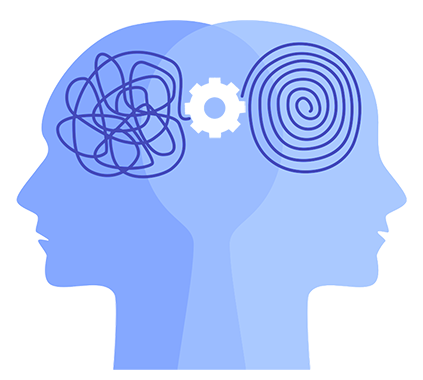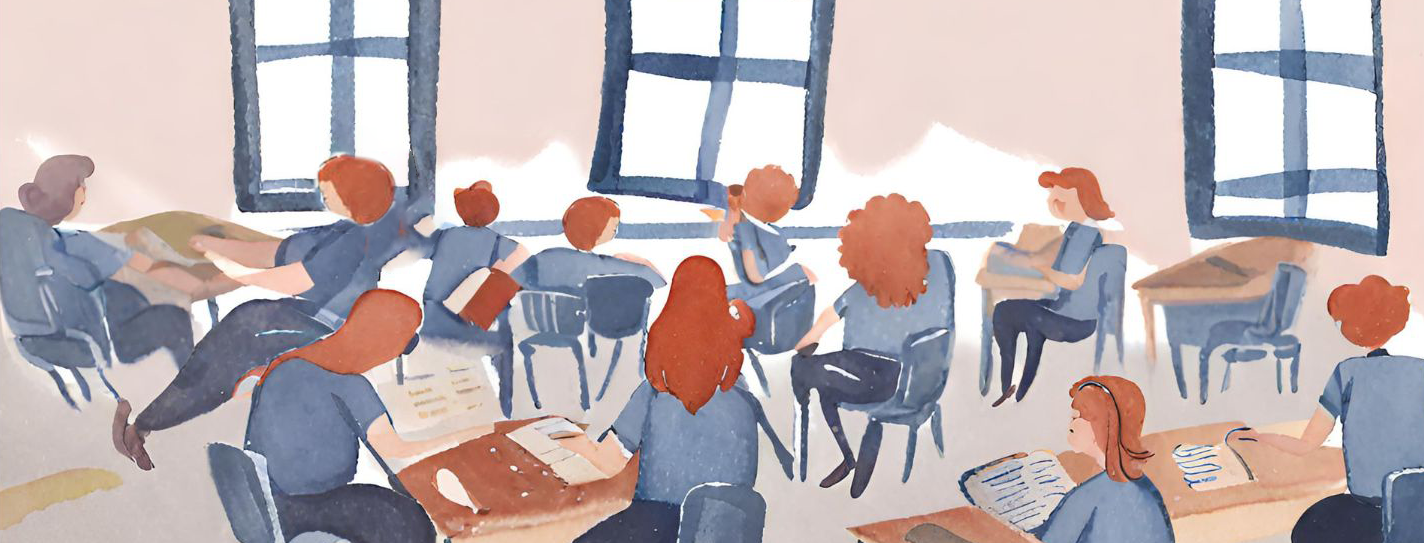So what does neurodivergence or neurodiversity mean?
Neurodiversity is a term coined by Judy Singer combining the two words, neurological and diversity. As an Australian sociologist who is autistic, she created this term to encompass all neurotypes in the late 1990s (Singer, 1999).
Neurodiversity in its many presentations are on the rise. In 2020, the Centre for Disease Control identified autism as one in 36 in the general population (Walensky et al., 2020). The research continues to grow at higher rates and is predicted to continue (Russell et al., 2022). People who identify as neurodivergent today may or may not include a formal diagnosis and the support needs are vastly differing.
Here are some of the diagnostic names as per the American Psychiatric Association’s Diagnostic and statistical manual of mental disorders: DSM-5 (Vol. 5).
- Autism Spectrum Disorder (ASD)
- Pervasive Developmental Disorder – Not Otherwise Specified (PDD-NOS)
- Attention Deficit Hyperactivity Disorder (ADHD)
- Potentially co-occuring learning and sensory differences such as
- Dyslyexia
- Dyspraxia
- Dyscalculia
- Synesthesia
- Developmental Language Disorder
- Developmental Co-ordination Disorder
- Intellectual Disability
- Tic Disorder and other learning differences
In the world of variation, we have many different presentations that may or may not have co-occuring features, traits of but not meeting the diagnostic criteria.
More information on Neurodivergence will be added to the is page over the coming month as there is a lifetime of knowledge to add and many more resources to feature. Check back again soon for more information on the science of neurodiversity.
For now, if you’re a science article nerd like me feel free to read:
References
Agarwal, N., Moya, E., Yasui, N., & Seymour, C. (2015). “Participatory action research with college students with disabilities: Photovoice for an inclusive campus.
Armstrong, T. (2015). The Myth of the Normal Brain: Embracing Neurodiversity. In AMA Journal of Ethics (Vol. 17). http://www.wsj.com/articles/SB100014240527023044184045794655613648
Australian Senate Community Affairs References Committee. (2023). Assessment and support services for people with ADHD Retrieved November 12, 2023 from https://parlinfo.aph.gov.au/parlInfo/download/committees/reportsen/RB000138/toc_pdf/AssessmentandsupportservicesforpeoplewithADHD.pdf
Clément, M. A., Lee, K., Park, M., Sinn, A., & Miyake, N. (2022). The Need for Sensory-Friendly “Zones”: Learning From Youth on the Autism Spectrum, Their Families, and Autistic Mentors Using a Participatory Approach. Frontiers in Psychology, 13. https://doi.org/10.3389/fpsyg.2022.883331
Connolly, S. E., Constable, H. L., & Mullally, S. L. (2023). School distress and the school attendance crisis: a story dominated by neurodivergence and unmet need. Frontiers in Psychiatry, 14. https://doi.org/10.3389/fpsyt.2023.1237052
Dallman, A. R., Williams, K. L., & Villa, L. (2022). Neurodiversity-Affirming Practices are a Moral Imperative for Occupational Therapy. The Open Journal of Occupational Therapy, 10(2), 1–9. https://doi.org/10.15453/2168-6408.1937
Dillenburger, K., & Keenan, M. (2023). Autism and Behavior Analysis: From Dissonance to Dialogue. International Electronic Journal of Elementary Education, 15(3), 199–208. https://doi.org/10.26822/iejee.2023.292
Do, P. L., Frawley, P., Goldingay, S., & O’Shea, A. (2021). The Use of Photovoice in Research With People on the Autism Spectrum: A Meta-Synthesis of the Literature. In Research in Autism Spectrum Disorders (Vol. 87). Elsevier Ltd. https://doi.org/10.1016/j.rasd.2021.101828
Emilsson, B., Gudjonsson, G., Sigurdsson, J. F., Baldursson, G., Einarsson, E., Olafsdottir, H., & Young, S. (2011). Cognitive behaviour therapy in medication-treated adults with ADHD and persistent Symptoms: A randomized controlled trial. BMC Psychiatry, 11. https://doi.org/10.1186/1471-244X-11-116
Ha, V. S., & Whittaker, A. (2016). ‘Closer to my world’: Children with autism spectrum disorder tell their stories through photovoice. Global Public Health, 11(5–6), 546–563. https://doi.org/10.1080/17441692.2016.1165721
Howe, S. J., Hewitt, K., Baraskewich, J., Cassidy, S., & McMorris, C. A. (2020). Suicidality Among Children and Youth With and Without Autism Spectrum Disorder: A Systematic Review of Existing Risk Assessment Tools. In Journal of Autism and Developmental Disorders (Vol. 50, Issue 10, pp. 3462–3476). Springer. https://doi.org/10.1007/s10803-020-04394-7
Leif, E., Jennings, H., Furlonger, B., & Fox, R. (2020). A survey of applied behaviour analysis practitioners in Australia: Education, training, and barriers to professional practice. Societies, 10(4), 99.
Luminet, O., Nielson, K. A., & Ridout, N. (2021). Having no words for feelings: alexithymia as a fundamental personality dimension at the interface of cognition and emotion. In Cognition and Emotion (Vol. 35, Issue 3, pp. 435–448). Routledge. https://doi.org/10.1080/02699931.2021.1916442
McArthur, G., Castles, A., Kohnen, S., & Banales, E. (2016). Low self-concept in poor readers: Prevalence, heterogeneity, and risk. PeerJ, 2016(11). https://doi.org/10.7717/peerj.2669
McClemont, A. J., Morton, H. E., Gillis, J. M., & Romanczyk, R. G. (2021). Brief Report: Predictors of School Refusal Due to Bullying in Children with Autism Spectrum Disorder and Attention-Deficit/Hyperactivity Disorder. Journal of Autism and Developmental Disorders, 51(5), 1781–1788. https://doi.org/10.1007/s10803-020-04640-y
McGarvey, J. (2023). A photo-elicitation as an arts-based method for exploring the experiences of LGBTQ+ students in higher education in Ireland. Art, Design & Communication in Higher Education, 22(1), 55–68. https://doi.org/10.1386/adch_00062_1
Porges, S. W. (2011). The polyvagal theory: Neurophysiological foundations of emotions, attachment, communication, and self-regulation (Norton series on interpersonal neurobiology). WW Norton & Company.
Povee, K., Bishop, B. J., & Roberts, L. D. (2014). The use of photovoice with people with intellectual disabilities: reflections, challenges and opportunities. Disability and Society, 29(6), 893–907. https://doi.org/10.1080/09687599.2013.874331
Russell, G., Stapley, S., Newlove-Delgado, T., Salmon, A., White, R., Warren, F., Pearson, A., & Ford, T. (2022). Time trends in autism diagnosis over 20 years: a UK population-based cohort study. Journal of Child Psychology and Psychiatry and Allied Disciplines, 63(6), 674–682. https://doi.org/10.1111/jcpp.13505
Sandoval-Norton, A. H., & Shkedy, G. (2019). How much compliance is too much compliance: Is long-term ABA therapy abuse? In Cogent Psychology (Vol. 6, Issue 1). Cogent OA. https://doi.org/10.1080/23311908.2019.1641258
Singer, J. (1999). Why can’t you be normal for once in your life?: From a ‘Problem with No Name’ to a new category of disability. In Corker, M. and French, S. (Eds.). Disability Discourse Open University Press UK https://www.worldcat.org/title/disability-discourse/oclc/39182312
Totsika, V., Kouroupa, A., Timmerman, A., Allard, A., Gray, K. M., Hastings, R. P., Heyne, D., Melvin, G. A., & Tonge, B. (2023). School Attendance Problems Among Children with Neurodevelopmental Conditions One year Following the Start of the COVID-19 Pandemic. Journal of Autism and Developmental Disorders. https://doi.org/10.1007/s10803-023-06025-3
Van Leeuwen, T. M., Van Petersen, E., Burghoorn, F., Dingemanse, M., & Van Lier, R. (2019). Autistic traits in synaesthesia: Atypical sensory sensitivity and enhanced perception of details. Philosophical Transactions of the Royal Society B: Biological Sciences, 374(1787). https://doi.org/10.1098/rstb.2019.0024
Walensky, R. P., Bunnell, R., Kent, C. K., Gottardy, A. J., Leahy, M. A., Martinroe, J. C., Spriggs, S. R., Yang, T., Doan, Q. M., King, P. H., Starr, T. M., Yang, M., Jones, T. F., Boulton, M. L., Carolyn Brooks, M., Virginia Caine, M. A., Fielding, J. E., David Fleming, M. W., Halperin, W. E., … Johnson, L. (2020). Morbidity and Mortality Weekly Report Prevalence and Characteristics of Autism Spectrum Disorder Among Children Aged 8 Years-Autism and Developmental Disabilities Monitoring Network, 11 Sites, United States, 2020 Surveillance Summaries Centers for Disease Control and Prevention MMWR Editorial and Production Staff (Serials) MMWR Editorial Board.
Whitehouse, A. (2022).National guideline for supporting the learning, participation, and wellbeing of autistic children and their families in Australia. Autism CRC. Brisbane.
Wilson, B., Beamish, W., Hay, S., & Attwood, T. (2014). Prompt dependency beyond childhood: Adults with Asperger’s syndrome and intimate relationships. Journal of Relationships Research, 5. https://doi.org/10.1017/jrr.2014.11

